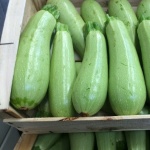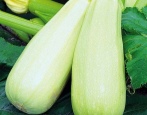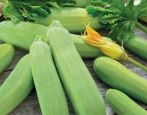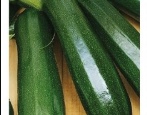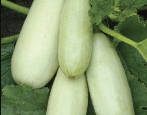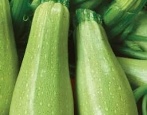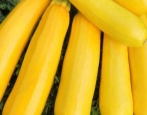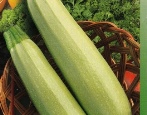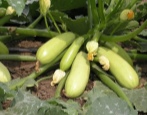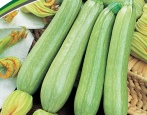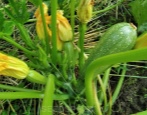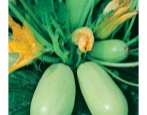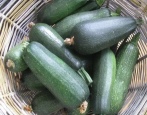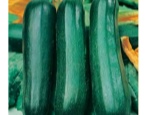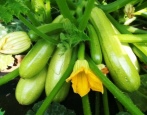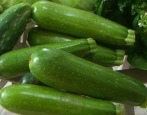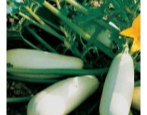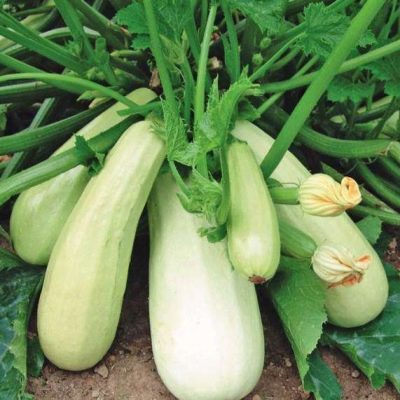
- Year of approval: 1983
- Ripening terms: early maturing
- The period from germination to harvest: 36-44 days
- Description of the plant: compact
- Leaves: pentagonal, slightly and medium-sized, dark green, with white spot
- Fruit shape: cylindrical
- Fruit color: whitish in technical ripeness, yellow in biological ripeness, no pattern
- Color of the pulp: white or light yellow
- Pulp (consistency): woody
- Fruit weight, kg: 0,6-0,9
For decades, many vegetable growers have been growing proven zucchini varieties that quickly get used to growing conditions, rarely get sick and give consistently high yields. The early ripe variety Beloplodnye, bred by domestic scientists, is very popular.
Breeding history
An early variety of marrows Beloplodnye is the result of the work of domestic breeders of the All-Russian Institute of Plant Genetic Resources named after V.I. N.I. Vavilov. The variety was obtained in 1979. The vegetable culture appeared in the State Register in 1983. The vegetable is cultivated in all climatic zones of Russia. You can grow zucchini both in garden beds and in farm fields.
Description of the variety
Vegetable culture White-fruited is a compact bush-type plant that grows to a height of 70 cm. As a rule, the diameter of the bush does not exceed 80-100 cm. The squash bush is characterized by a shortened central shoot, a small number of lashes, and moderate foliage.
The leaves are pentagonal with pronounced light spots on the surface. A distinctive feature of the plant is the unusual shape of the leaf plate with weak or medium grooves at the ends. The color of the foliage is uniform dark green. During the flowering period, large bright yellow flowers of a standard shape are formed on the bushes.
Characteristics of the appearance of plants and fruits
Zucchini White-fruited belong to the group of large-fruited. Specimens of the same shape and size ripen. The average weight of a vegetable is 600-900 g. Zucchini grows up to 22-30 cm long. The shape of a vegetable is standard: cylindrical.
At the stage of technical ripeness, the vegetable has a whitish color, and a fully ripe specimen acquires a light yellow cover. The peel of the vegetable is of medium density, rough, with a noticeable shine and pronounced ribbing at the base.
Harvested vegetables can easily be transported over long distances, for some time they can be stored in a dry, dark and cool place, where the temperature does not exceed + 5 ... + 10 °. Fruits without cut tails have a long keeping quality.
Purpose and taste
The variety has excellent taste. Light yellow, sometimes snow-white pulp is characterized by medium density, fleshy and woody, without voids and wateriness. The taste of the vegetable is balanced, delicate and slightly oily. Especially tasty fruits during early ripening, then the pulp of cooked vegetables simply melts in your mouth. There is no bitterness in the taste.
The seeds in the pulp are large and flat, but there are few of them. A feature of the variety is the high fiber content in the pulp. The fruits can be widely used in cooking: marinated zucchini, stuffed, canned, frozen, added to hot dishes, and also processed into caviar and salads.
Ripening terms
White-fruited are an early maturing species. The growing season lasts 36–44 days.The fruits ripen together. To get a good harvest of young specimens, it is necessary to pick ripe vegetables in a timely manner. Harvest zucchini every 3-4 days. The fruiting period can last 2-3 months. The main thing is not to let the vegetables become overripe as they become unfit for human consumption.
Yield
The variety is quite fruitful. Subject to agricultural technology, more than 10 kg of tender and tasty zucchini can be harvested from 1 m 2 of plantings. The maximum yield indicator is recorded at around 12 kg / m 2.
Growing and care
The plant is cultivated in 2 ways: seedling and seed. More preferable is direct sowing of seeds into the ground, when the air is warmed up to a level of + 12 ... + 18 °. Sowing in open ground is carried out in late May - early June. To accelerate the germination of seeds will help the treatment of seed with growth stimulants.
The seeds are deepened by 4-6 cm. It is better to put 3-4 seeds in each hole. Sowing is carried out according to the scheme 60x60 cm. The best predecessors for zucchini are early potatoes, tomatoes, onions or legumes.
Zucchini care consists of the following procedures: regular irrigation with water settled in the sun every 4–5 days, top dressing 3-4 times per season (the culture reacts well to organic matter), weeding and loosening of the soil, hilling as needed, prevention of diseases and pest infestations ...
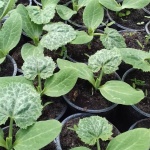
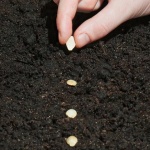
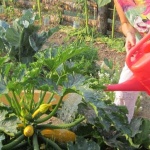
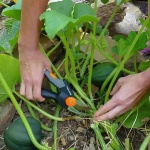
Soil requirements
Zucchini grow comfortably in light, loose, fertile, breathable and moisture-permeable soils with neutral acidity. Often, planting is carried out in light loam or sandy loam.
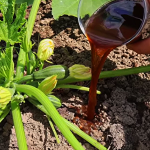
Required climatic conditions
Vegetable culture is stress-resistant, therefore it is able to withstand short droughts, heat, temperature changes. Susceptibility to shading is also worth noting. Zucchini are planted in leveled and sunny areas, where it is always light and warm.
Disease and pest resistance
This variety has resistance to powdery mildew, fusarium and bacteriosis. The only disease to which the culture is susceptible is gray rot. Spider mites, melon aphids, slugs and sprout flies are considered dangerous pests for the plant.
